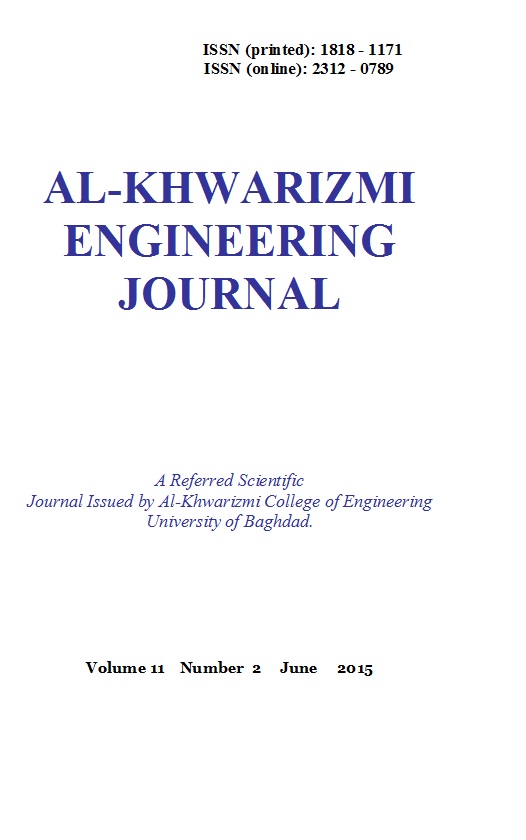Characterization of Biochar Produced from IRAQI Palm Fronds by Thermal Pyrolysis
Keywords:
الكلمات المفتاحية: سعف النخيل، التحلل الحراري، الفحم الحيوي، FTIR، الوقود الحيوي، محسنات التربة.Abstract
Abstract
The present paper focuses in a particular on the study of the biochar production conditions by the thermal pyrolysis of biomass from local Iraqi palm fronds, in the absence of oxygen. The biochar product can be used as soil improvers. The effect of temperature on the extent of the thermal pyrolysis process was studied in the range from 523 to 773K with a residence time of 15 minutes and nitrogen gas flow rate of 0.1 l/min. The produced biochar was characterized as will as biomass and degradation products. The results showed that the rate of biochar production decreases with the increasing in temperature, also it was noted that the normalized biochar surface area and pore size increases with the increasing in temperature.
The results showed an increase in the biochar ability to absorb water and the percent of water content increases with increasing temperature. The quality and quantity of the products of the thermal pyrolysis of biomass depend directly on the temperature and on the biomass basic composition of the compounds: hemicellulose, cellulose and lignin.
FTIR analysis gave an excellent description to the nature of the active groups on the biochar surface. These groups vary with the temperature and biochar composition (i.e. hemicellulose, cellulose and lignin).
Downloads
Downloads
Published
Issue
Section
License
Copyright: Open Access authors retain the copyrights of their papers, and all open access articles are distributed under the terms of the Creative Commons Attribution License, which permits unrestricted use, distribution, and reproduction in any medium, provided that the original work is properly cited. The use of general descriptive names, trade names, trademarks, and so forth in this publication, even if not specifically identified, does not imply that these names are not protected by the relevant laws and regulations. While the advice and information in this journal are believed to be true and accurate on the date of its going to press, neither the authors, the editors, nor the publisher can accept any legal responsibility for any errors or omissions that may be made. The publisher makes no warranty, express or implied, with respect to the material contained herein.












